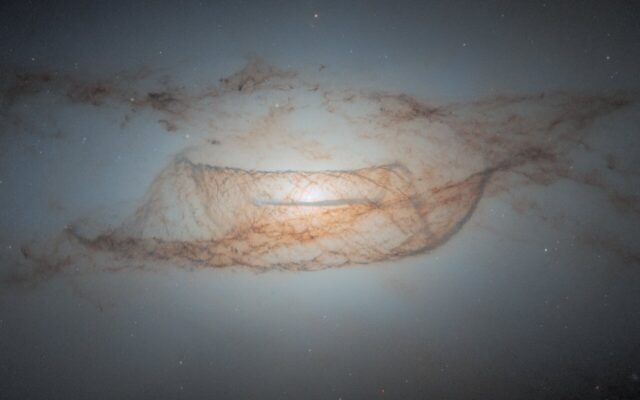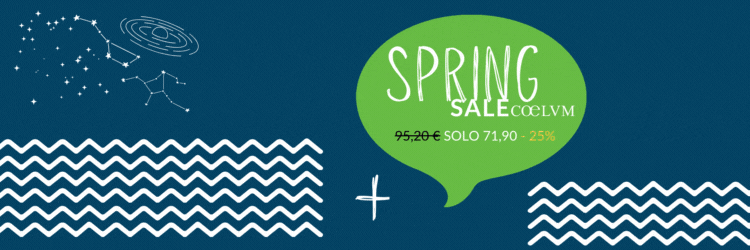
reading time: 2 minutes
In this new image from NASA/ESA’s Hubble Space Telescope, there’s a near-edge view of the lenticular galaxy NGC 4753, which has an elliptical shape and ill-defined spiral arms.
NGC 4753 is located about 60 million light-years from Earth in the constellation Virgo and was first discovered by astronomer William Herschel in 1784. It is a member of the NGC 4753 group of galaxies within the Virgo II Cloud, which includes about 100 galaxies and galaxy clusters.
This galaxy is believed to be the result of a galactic merger with a neighboring dwarf galaxy that occurred about 1.3 billion years ago, and that dust lanes built up around the nucleus during the merger event.


The prevailing hypothesis is that most of the galaxy’s mass lies in a slightly flattened spherical halo of dark matter. Dark matter is a form of matter that cannot currently be observed directly, but is thought to make up about 85% of all matter in the universe. It is defined as “dark” because it does not appear to interact with an electromagnetic field and therefore does not appear to emit, reflect, or refract light.
This object is also of scientific interest for testing various theories about the formation of lenticular galaxies due to its low-density environment and complex structure. In addition, this galaxy has hosted two known Type Ia supernovae.
For more than three decades, the Hubble Space Telescope (HST) has served as one of the most important instruments in modern astronomy. Launched on April 24, 1990, Hubble revolutionized our understanding of the universe, providing unprecedented images of galaxies, nebulae and distant stars.
Why a telescope in space?
Earth is shrouded in an atmosphere that, although vital for life, distorts light coming from space. This phenomenon, known as atmospheric distortion, has limited astronomers’ ability to clearly observe the universe. Hubble is positioned behind this barrier, at an altitude of about 550 kilometers, where it can observe the universe in ultraviolet, visible light, and near-infrared wavelengths.1.


Innovations and discoveries
With a primary mirror 2.4 meters in diameter, Hubble has such high pointing precision that it can hit a distance of 320 kilometers with a laser. This precision has allowed us to observe details that were previously inaccessible.
Among Hubble’s most important discoveries are the following:
- Determining the age of the universe is estimated at 13.8 billion years.
- Observing the formation of galaxies in the early years of the universe.
- The discovery of the accelerated expansion of the universe, which led to the emergence of the theory of dark energy.
Hubble story
The space telescope concept was first proposed in 1923 by German physicist Hermann Oberth, and later developed by American astrophysicist Lyman Spitzer in 1946. After decades of development and collaboration between… NASA And theEuropean Space Agency (European Space Agency), Hubble has become a reality.
for further information
Hubble and Webb (HST and JWST), comparing two genes

“Internet trailblazer. Travelaholic. Passionate social media evangelist. Tv advocate.”
